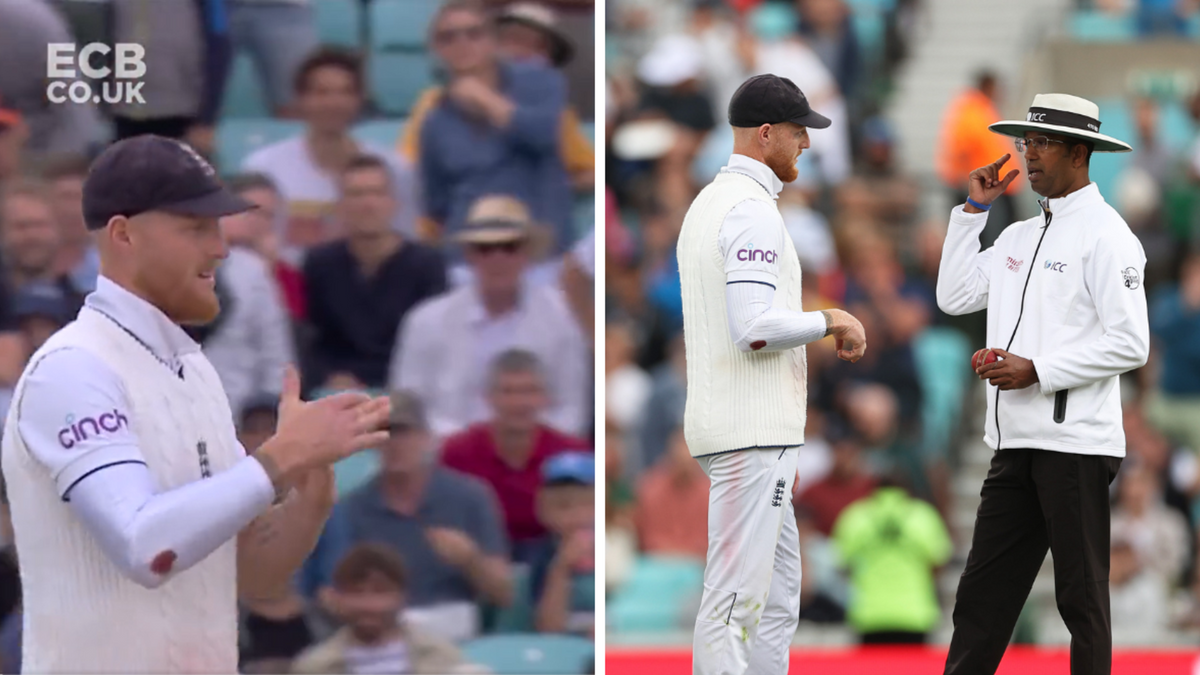
Steve Smith was given ‘not out’ despite Ben Stokes initially taking a clean catch, and England lost a review in the process – here’s why the umpires reached the right decision on both counts.
You can bet on the 2023 Ashes with our Match Centre partners, bet365.

What happened with the Steve Smith-Ben Stokes ‘catch’
In the last over before lunch on the final day of the fifth Ashes Test, Smith gloved a delivery from Moeen Ali up in the air. Ben Stokes took the catch above his head, but his celebrations were cut short as the ball rolled towards short leg.
England still appealed, but umpire Joel Wilson was unmoved. There was confusion on the field, but with two seconds left on the timer, Stokes opted to review.
The TV umpire judged that Smith had gloved the ball and initially stated that the catch had been taken, before saying “he has dropped the ball before he was going to celebrate, not in complete control of the catch”. Smith was ruled not out.
There was then debate between England’s players and the umpires as they left the field, with England seemingly unhappy that they had been forced to use up a review.
A huge missed opportunity for England and Ben Stokes 😬 #Ashes2023pic.twitter.com/rHpN6tC9rL
— Wisden (@WisdenCricket) July 31, 2023
Why the ‘not out’ decision was correct
Clause 33.3 of Law 33 states: “The act of making a catch shall start from the time when the ball first comes into contact with a fielder’s person and shall end when a fielder obtains complete control over both the ball and his/her own movement.”
Close inspection of the replays revealed that the ball was dislodged from Stokes’ hand by his thigh as he landed. Given that this is the case, he did not have complete control of his own movement. This is similar to why a catch by Mitchell Starc at Lord’s was ruled not out, with Starc initially taking a catch in the air, before pressing it into the ground as he landed.
Why England were right to lose a review
Given that the main contention, in England’s case, was whether a fair catch had been taken, Wilson could have chosen to utilise an umpire review, which would have meant England did not have to use a review themselves. Umpires can use the review system for stumped, run out, bowled, hit wicket, and obstructing the field decisions, and also for caught decisions, but only to determine whether a catch is fair or if there was a bump ball. In the case of a low catch, the TV umpire can then use UltraEdge to check if there was an edge, but an on-field umpire cannot use the review system simply for checking if there is an edge.
The ICC playing conditions make clear that the on-field umpire should only use the review system if they are unsure about their decision. Wilson either felt Smith hadn’t edged it, or, perhaps more likely, assessed quickly that Stokes had dropped the ball before obtaining complete control, and hence felt there was no need for a review. Wilson would have been within his rights to use an umpire review, but was equally OK not to do so.
England opted to review, with player reviews available for every manner of dismissal except from being ‘timed out’. As R Ashwin showed recently, it is even possible for two player reviews to take place on the same ball. Wilson was then vindicated, with his on-field decision upheld. When reviewing a catch, a side can only keep a review if there is a failure of technology, which was not the case here.
England have lost two reviews, leaving them with one remaining for the rest of the game.







